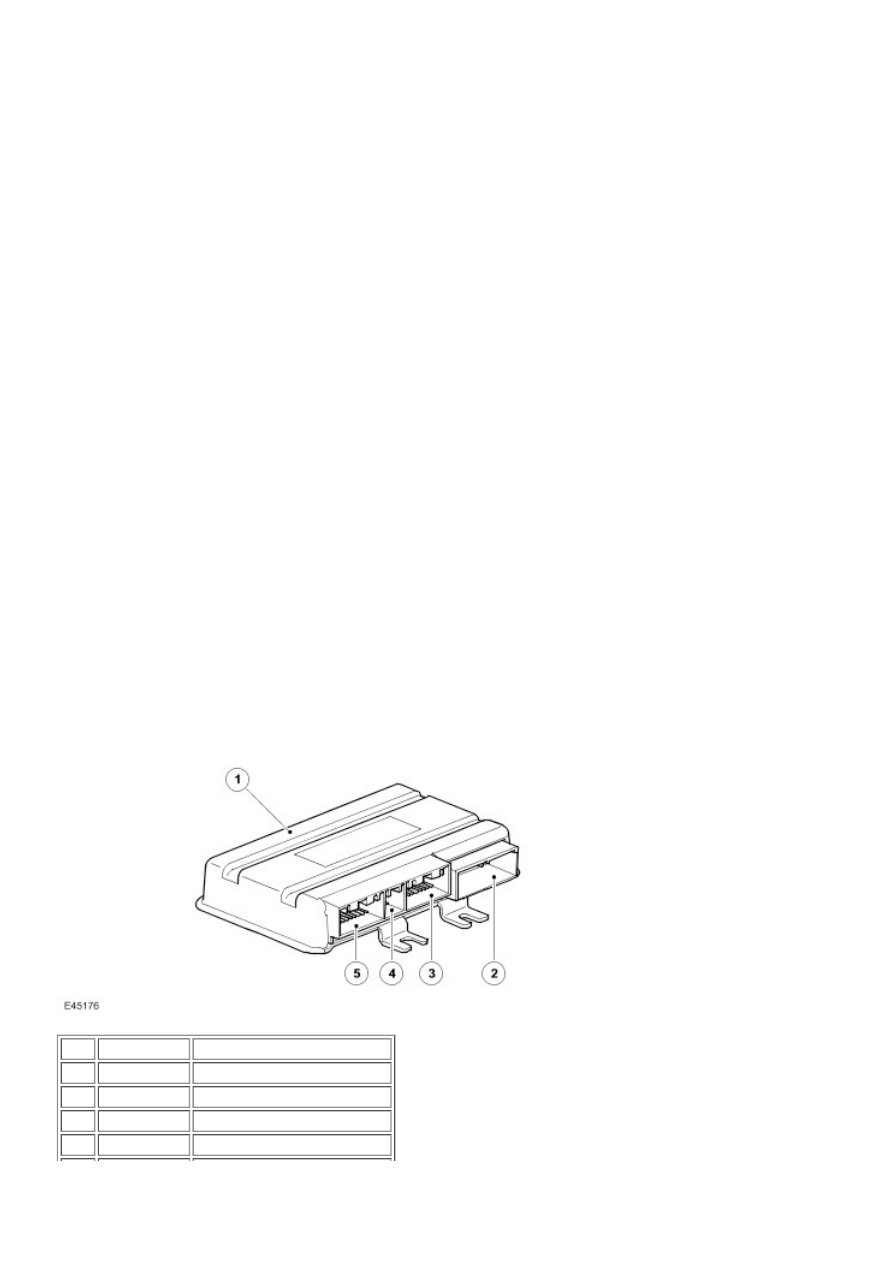Range Rover Sport. Manual - part 50

Suspension Prevented From Moving
If the air suspension control module is attempting to change the suspension height and it detects that the suspension is
prevented from moving, the control module will stop all suspension movement. This can be caused by jacking the vehicle,
attempting to lower the vehicle onto an object or raising the vehicle against an obstruction.
The air suspension switch lamps operate as described for extended mode and the same message is displayed in the
message center. To start the air suspension system operating, press the air suspension switch briefly in the up or down
position or drive the vehicle at a speed of more than 12.5 mph (20 km/h).
Periodic Re-levelling
When the vehicle is parked, the air suspension control module 'wakes up' two hours after the ignition was last switched off
and then once every six hours. The vehicle height is checked and if the vehicle is not level within a pre-set tolerance, small
downwards height adjustments may be made automatically.
Transportation Mode
Transportation mode is a factory set mode which locks the suspension to enable the vehicle to be safely lashed to a
transporter. Transportation mode can only be selected or deselected using T4.
When the ignition switch is switched off, the vehicle will be lowered onto the bump stops. This ensures that the securing
straps do not become loose should air leak from the air springs.
When the engine is running, the air supply unit will operate to raise the vehicle height, allowing the vehicle to be loaded.
When the ignition switch is subsequently switched off, the vehicle will again lower onto the bump stops. An audible warning
will be emitted from the instrument cluster sounder until the vehicle has reached the higher transportation height.
AIR SUSPENSION CONTROL MODULE
Item Part Number
Description
1
-
Air suspension control module
2
-
Connector C2321
3
-
Connector C2320
4
-
Connector C2030